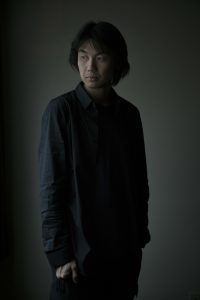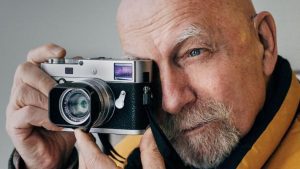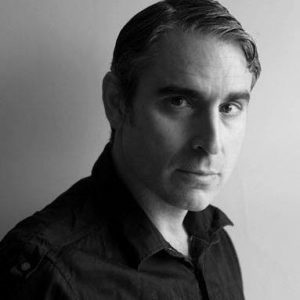
“If it bleeds it leads.” In the world of journalism, this statement refers to the perception that news stories or programs that deal with violence or conflict are often bumped up for coverage.
And while this is often true, it wasn’t always an editorial mindset. It began to be popularized in the industry in the last 20 to 30 years, when readership and circulation numbers started to play a role in determining the life expectancy of a publication. Today, this—and many other ethical problems—exist in the beat of human rights and war reporting.
Sensationalization of the news is a common problem in mass media not only during drama-filled political campaigns and terror threats, but also when reporting on foreign conflicts. Through flashy headlines, shocking photos and unverified information, many publications which heavily rely on social media readership, utilize these clickbait-based approaches to broaden their audience.
But during times of crises, Owen J Watson, the executive producer of Al Jazeera’s Americas Bureaux, says that journalists must be as dispassionate as possible and simply report on the facts. This will not only enhance their credibility, but also help keep their readers calm and properly informed.
“You’re talking about real people in almost apocalyptic situations, for example Syria, but you’ve got to be careful that you deal with the story on an emotional level, but you keep your emotions in check to ensure that the facts stand up,” says Watson, adding that you must answer the fundamental questions of whether the event occurred, where it occurred, who the victims were and who the alleged perpetrator is.
Watson also added that if you let your emotions take the reigns when reporting, you’ll often hear what you want to hear and report with a bias. One way to avoid skewed or sensationalized reporting is through a proper fact-checking protocol. Al Jazeera’s Americas Bureaux is based in Washington D.C. and its fact-checking process involves the program producer and correspondent speaking to a range of sources to confirm the reported facts.
One example he shared was if the correspondent was reporting on the rights of the Indigenous population in Chile after the Pope’s visit in January, the team would not only reach out to leaders of human rights and advocacy organizations who have researched this issue, but also local tribal leaders, police, and politicians. Through this extra research, you ensure that the W5H (who, what, where, why, how) of the story adds up, and you apply this process to every story.
The Canadian media development organization Journalists for Human Rights is known for its work training correspondents and locals to report on human rights and governance issues in communities around the world. Executive director Rachel Pulfer said via email that fact checking is also an integral part of their reporting process. No pieces are published on their website without being checked, and all pieces “are required to be objective and feature all sides of a story.”
But the biggest reoccurring issue in the field of human rights journalism according to Pulfer is the lack of understanding of what a “human rights issue” actually is from both the reader and writer.
“There is a common perception in Canada that human rights are niche, fringe concerns namely a special interest that activists get worked up about, but that the rest of us don’t really have a stake in. Nothing could be further from the truth,” writes Pulfer, adding that through the human rights movement, we are gifted access to clean water, freedom from torture, education, housing and “all of these things form the foundation of a healthy lifestyle in a healthy society.”
In order to properly communicate the value of human rights reporting to their correspondents and local reporters, Pulfer said that JHR has a pre-departure and in-country training session and employee assistance program which informs the reporters of what resources they can access when dealing with trauma, how to navigate through a conflict zone, and the organization’s human rights reporting curriculum.
The curriculum follows a framework loosely called PANEL, according to Pulfer. Quality reporting must be Participatory (include the voices of those affected), must hold stakeholders Accountable, Non-discriminatory (through language), Empowering (accessible to affected communities and to help the community members), and must include Legal instruments to enforce, uphold or protect the human right cited in the story.
Reporters are also taught the value of seeking consent when photographing or reporting moments of crisis by learning the importance of permission, public domain, copyrights and usage.
“We do this both as part of our training as well as providing specific training on gender-sensitive reporting, issues around featuring photographs survivors of violence, hate crimes, domestic or sexual assault, or minors in stories, and other such concerns,” says Pulfer.
PHOTOJOURNALISM
The Ryerson Review of Journalism spoke to three photojournalists whose job is to document people at their worst. They spoke about the balance between journalism and humility, what it means to ‘steal’ somebody’s moment, and their own personal code of ethics.
Ed Ou

When Ed Ou crosses the U.S. border, he experiences at least a few hours hold-up. “Going there is still very complicated,” he says. “There will be a slew of difficulties on my way back.” Born in Taiwan and raised mostly in Vancouver, Ou is now based in New York City represented by Reportage by Getty Images, and is the recipient of a list of awards a paragraph long. In 2016, while on assignment with the CBC, he was stopped at Vancouver International Airport by the U.S. Border Protection Agency as he made his way to photograph the Dakota Access Pipeline protests. They held him for six hours, questioning him on past assignments and rifling through his phones. Ou has travelled to countries such as Afghanistan, Turkey, Egypt, Somalia, and parts of Asia, and studied Arabic in Jerusalem for a period of his life while covering the Israel-Palestine conflict.
His photo series’ illustrate the lives of people from many different cultures in various situations. Not every project is about suffering or pain, but each tells a story. Ou has a talent for combining art and emotion in his photographs, and he uses lighting and angles to frame his pictures. “You need to grab people on an aesthetic and also an emotional level so they can connect,” he says. “I think ideally for me photojournalism is ideally an intersection of art and also human interaction and context and I don’t think you can have one without the other.” Yet there are rules, he says, especially when these subjects are in positions of vulnerability.
“Personally how I choose my subjects is related to how I relate to them on an emotional basis,” says Ou. “The way you engage with somebody you just meet in the worst moment of their lives is really delicate.” He says this all happens in seconds—eye contact, a hand on someone’s shoulder, a reverent silence. By taking somebody’s picture, he says, the journalist is really stealing their story. So this process requires self reflection. “What would an image of this person do to create understanding for the wider narrative of what is happening in this conflict or disaster? That’s kind of the question you need to ask first.”
It is these questions that haunt him. “Whether I did that right in every context or if I really insensitively screwed up in other contexts, it’s something I think about every night,” he says. “It’s tough because there’s no way to dissect every interaction and you’re having interactions on a daily basis.”
“I see so many people walking around stealing moments looking at the frame on those screens and being satisfied with it and walking off,” says Ou. “You have responsibilities of truth and context and accuracy and getting people’s names.”
Peter Bregg

Peter Bregg has worked in photojournalism for four decades, nearly two of them spent working as chief
photographer at Maclean’s. Over the years he has travelled to over 70 countries and covered Vietnam in 1973, the Iran Hostage Crisis, and 9/11. He won the Lifetime Achievement Award from the Canadian Journalism Foundation in 2014, and was awarded the Order of Canada in 2016. His website says, “I’m Peter Bregg…and I’ve captured life,” but the last word changes to “death,” “happiness,” “grief.” When I met up with him he was just arrived from Afghanistan on assignment.
When working for Maclean’s, Bregg recounts a story they were running about recent playground closures due to parents suing schools for injuries. Being a national magazine, Bregg sought out a photographer in Newfoundland, who took photographs of children in a playground, which they ran in the next issue. Two weeks later, he got a call from an agitated woman, who told him that picture revealed to her abusive ex-husband in Saskatchewan where she and her child were living. “And a light when on,” he says. “It never occurred to us.”
Now working as contract lecturer at Ryerson University, Bregg says he sends students out to take photographs, but tells them to avoid taking photos of children. Basic decency and respect are important in this line of work, he notes, even though certain principles and etiquette is not laid down by law. “There are no hard and fast rules,” he says, but acknowledges that the farther away from home, the more relaxed they are. “You don’t stop and ask questions or ask for permission if it’s news.”
Bregg says a photographer in the Mediterranean covering the refugee migration is not going to stop and ask for consent or context. “There’s good taste and good manners then when it’s newsworthy,” he says. “Photographers don’t really stop and say ‘should I or shouldn’t I?’ You shoot first and ask later.” Likewise, he says many might say he is exploiting a grieving mother if she was leaning over the body of her drowned child that’s been pulled out of a lake. “Do you know what happens when those pictures get published? Fewer drownings.”
“Now I’m not suggesting that justifies exploiting a situation, but news is news, and it’s not always pretty.”
Louie Palu
Louie Palu is a documentary filmmaker and photojournalist whose work addresses social and political issues,

conflict, and poverty. He has worked in countries such as Ukraine, Afghanistan, and India, and his photographs have been published in The Globe and Mail, The Atlantic, BBC, Al Jazeera, and many others. His work has taken a different approach to Ou’s, and Palu prides himself on not using “effects and gimmicks,” although many of his photo series are in black and white. “I don’t get caught up in technical camera issues and the aesthetic part happens subconsciously on its own,” he says. Palu also understands the emotional impact of sharing photographs that are emotionally charged and maybe difficult to see. “War photographs are many things not just bullets and shooting. War has many layers.” Palu likens his work to the visual documentation of the Vietnam War and images from the Auschwitz concentration camp. “I think we all benefit from understanding that dark period of this world,” he says.
Capturing these difficult moments raises questions of decency and purpose. How much does a photojournalist have to know about their subject before taking the picture? How many questions should they ask after it’s taken? Should the publication process be explained to the persons in the frame? Their positions of vulnerability increase the importance of asking these questions. How reporters navigate this power imbalance, and weigh the journalistic importance, is crucial.
“My working foundation is to respect the people I am photographing first, then also to consider what’s in the public’s interest,” says Palu. “There are no official rules to follow when taking pictures but it’s important to be kind and sensitive.”
“Sometimes you take photos and sometimes you don’t.”
About the author
Karoun Chahinian was the print production editor of the 2018 issue of the Ryerson Review of Journalism

